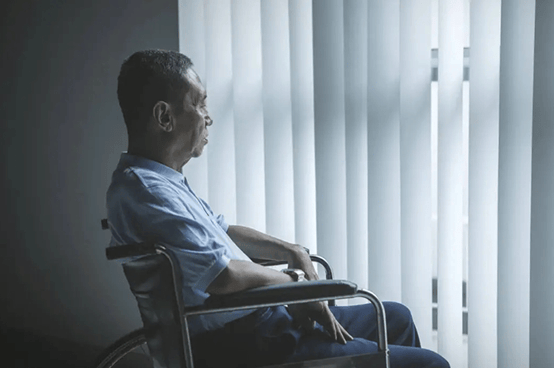With the progress of society and the improvement of medical level, the importance of mental health is gradually increasing. In recent years, with the continuous aging of the population, late-life depression, as a common but easily overlooked mental health issue, has become a topic of great concern.
What is late-life depression
Late-life depression is a very common depressive disorder in clinical practice, generally occurring in individuals aged 60 and above, with significant and persistent feelings of sadness as the core symptom. In clinical practice, late-life depression manifests in two situations: one is depression that first occurs in the late-life stage; the other is depression that originally had episodes in early adulthood and resurfaces in late-life, regardless of the type, late-life depression possesses many characteristics of the late-life period. The main symptoms of late-life depression include:
1. Feelings of inferiority. They tend to be suspicious, feeling that those around them look down on, dislike, or even disdain them, this kind of suspicion is different from the suspicion in schizophrenia, it originates from emotional disorders, arising from feelings of sadness.
2. Limited thinking. Elderly individuals experience slow brain responses, often referring to themselves as becoming dull, at times facing difficulty solving simple daily problems independently, thereby increasing existing feelings of inferiority.
3. Repeated self-deprecation and self-blame. Patients believe they cannot do anything right, magnifying trivial mistakes as unforgivable errors, feeling guilty towards everyone, constantly reproaching themselves.
4. Unstable emotions and easy agitation. Some patients may display symptoms like anxiety or restlessness for no apparent reason, leading to sighs, pacing, or sudden bursts of anger, while others may erupt due to external stimuli.
5. Insomnia. Insomnia is a major characteristic symptom of late-life depression, with early awakenings being the primary feature, leading to profoundly low moods upon waking in the early hours, causing distress about facing the upcoming day and how to cope.
6. Generalized body soreness and fatigue. This is a bodily manifestation of such mental illnesses, prominently affecting simple daily activities like dressing, walking, or eating, due to the body-wide soreness and fatigue, afflicted elderly individuals require significant willpower and effort to complete tasks.
Reasons why the elderly are more susceptible to depression
The cognitive functions of elderly individuals decline gradually, making them prone to issues, resulting in low moods due to poor receptiveness. As seniors age physiologically, they are susceptible to various chronic illnesses, and in severe cases incur incurable conditions, if they have poor financial circumstances preventing them from seeking treatment, an inability to see a hopeful future makes them prone to depression.
In rural settings, the suicide rate among the elderly is higher compared to urban areas, primarily due to economic issues. Particularly, “empty nesters” left behind by children who migrate for work often experience loneliness with no one to care for them, leading to accelerated aging and cognitive decline.
Depression often leads seniors to completely lose interest, contemplating nothing, desiring nothing, abandoning everything entirely. To promptly detect mental issues like depression, routine health check-ups for the elderly should include psychological assessments.
Elderly individuals with depression require medication. The issue is many seniors already have numerous underlying illnesses such as hypertension, diabetes, heart diseases, necessitating daily intake of multiple medications. Fearing the accumulation of medications or worrying about adverse reactions from drug interactions, many elderly individuals restrict themselves from taking antidepressants, resulting in very low depression treatment rates.
What to do if diagnosed with late-life depression
1. Medication treatment. Currently, the most mainstream and effective treatment for depression is medication, recommending the use of antidepressants with good efficacy and high safety, however, it’s crucial that psychotropic medications should be taken strictly under a doctor’s guidance.
2. Physical therapy. Aside from medication treatment, clinical practices also employ techniques like electroconvulsive therapy and repetitive transcranial magnetic stimulation as supplementary therapeutic methods.
3. Psychological therapy. In severe cases of late-life depression where self-relief methods are insufficient, seeking help from a psychologist is recommended. Psychological therapy primarily involves talking and communicating with a therapist to address various issues, categorized into supportive psychotherapy, cognitive-behavioral therapy, psychodynamic therapy, interpersonal therapy, and marriage and family therapy, among others. Psychological therapy is often conducted alongside medication treatment to enhance effectiveness.
4. Self-regulation and family support. When depression symptoms are mild, trying relaxation techniques and mood regulation approaches is beneficial, such as engaging in outdoor activities, actively participating in social events, cultivating hobbies, practicing meditation, listening to music, also adjusting lifestyle habits, consuming a balanced diet, maintaining a regular sleep schedule. Family members should provide care, regularly visiting or communicating with elderly parents, encouraging participation in group activities, among other supportive measures.


